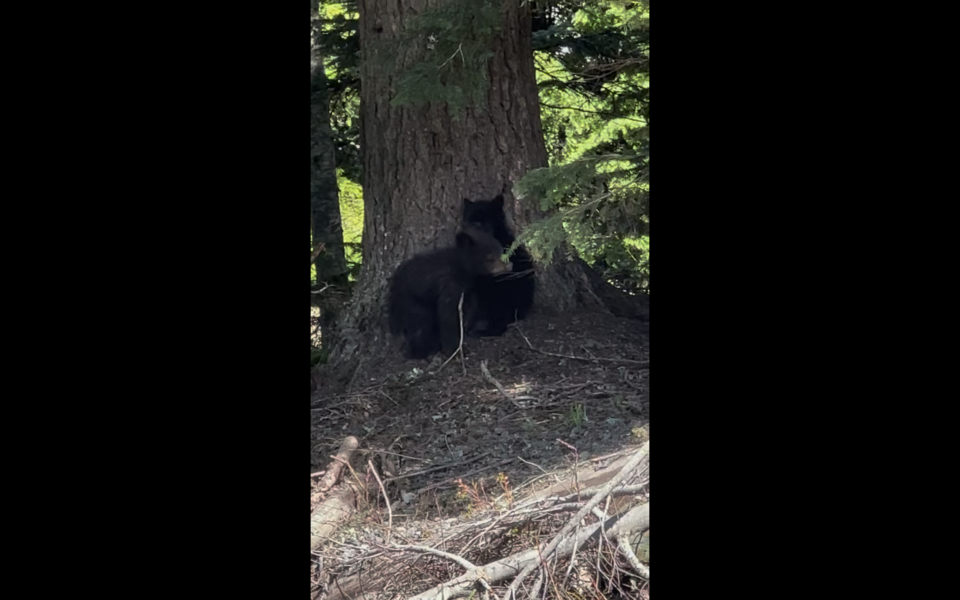Summers in Whistler seem to start just a little earlier each year.
That’s not to say summer is here already, in the first week of May—June in Whistler has a reputation for being called “Juneuary” for a reason—but recent days have provided ample sunshine in the valley, bringing out some early staples of every Whistler summer.
An increase in traffic, both foot and cycle, on the Valley Trail; the first warning signs of wildfire season, with fires near Squamish and the local fire danger rating hitting high for the first time in 2025; bears everywhere, including one very unfortunate incident in Kadenwood that saw a young woman knocked down and bitten by a lactating momma black bear, who was sadly shot and killed by the COS.
A heart-wrenching video of her cubs, crying at the base of a tree in Kadenwood, is a stark reminder of the responsibility we all share here in Whistler. This is not to lay blame on anyone for what transpired in that event, but it’s a clear reminder for everyone in the resort, visitors or otherwise, to respect local wildlife as summer approaches.
Instances of black bears attacking humans are exceedingly rare. The Kadenwood neighbourhood is the site of an infamous 2018 bear-feeding case, in which a Whistler woman was ultimately fined $10,500 for repeatedly feeding bears, but Conservation Officers said they were unable to confirm a connection.
“The COS cannot stress enough the importance of not feeding bears and other dangerous wildlife, which can create a serious risk to public safety, as well as the safety of the bear,” the COS said in a statement to Pique. “Violators can face fines under the Wildlife Act. Reports can be made to the Report All Poachers and Polluters (RAPP) hotline.”
But then, spring and early summer can be a funny thing in Whistler, as evidenced by the forecast seen early in the week. As of this Tuesday afternoon writing, Thursday’s forecast was showing a chance of flurries and/or rain showers before the sun and spring-like temperatures were expected to return starting Friday. As with so many things, your mileage may vary by the time you read this.
And while the Resort Municipality of Whistler announced the local fire danger rating was increased to high late last week, the danger had subsided considerably, at least according to the BC Wildfire Service, by May 6.
As summer gets underway in earnest, it’s worth staying tuned to the BC Wildfire Service’s conditions map, and whistler.ca/wildfire (or better yet, signing up for Whistler Alert at whistler.ca/whistleralert), for all the latest on wildfire.
Whistler has so far avoided wildfire catastrophe like those seen in Jasper or Lytton (knocking of course on all the wood in arm’s reach here), but look around you—the valley is a veritable tinder box just waiting for a light. And that’s to say nothing of the spruce budworm infestation currently impacting local forests—not cause for panic just yet, according to local experts, but worth keeping an eye on as far as wildfire risk goes (read more about that in an upcoming issue of Pique).
Compared to the disastrous totals of 2023—more than 2.84 million hectares of land burned, hundreds of homes and structures lost, tens of thousands forced to evacuate… the worst wildfire season on record in B.C.—last year was nothing short of a reprieve.
And yet, with an estimated 1.08 million hectares burned, 2024 was still the fourth worst wildfire season on record in B.C.—so even as the water slowly boils around us, the overall trends are obvious.
Like protecting local wildlife, reducing wildfire risk in Whistler is a responsibility we all share, whether that’s through proper campfire and/or smoking etiquette, FireSmarting our properties, or even just keeping an eye out for smoke, and reporting it when we see it.
At a municipal level, the Community Wildfire Resiliency Plan, first adopted in 2022, guides Whistler’s efforts, focusing on six strategies: Educating about FireSmart principles and wildfire prevention; adapting relevant legislation and community plans; increasing interagency cooperation; increasing cross-training between the Whistler Fire Rescue Service (WFRS), BC Wildfire Service (BCWS), RMOW staff, and external emergency management personnel; enhancing emergency preparedness in Whistler, including evacuation prep; and continuing “strategic vegetation management efforts”—i.e., fuel-thinning—while also ensuring “multiple forest values continue to be managed for.”
That last one has proven a sticking point for many in recent years, and the debate over how to manage Whistler’s forests is sure to carry through 2025 and beyond.
Clearly, protecting Whistler from wildfire is no small task, requiring careful consideration and input from multiple groups—one of the themes of a wildfire workshop hosted by the Cheakamus Community Forest on May 6 and 7.
Titled Wildfire Resilience in Times of Uncertainty, the workshop featured talks by local professionals involved in wildfire management and UBC academics breaking new ground in wildfire research (again, check back with Pique for more next week).
It’s a timely talk in a town that seems to dodge the proverbial wildfire bullet year after, but as the experts say, it’s not a matter of if Whistler is impacted by wildfire, but when.
The signs of spring and early summer are all around us—it’s up to us to make sure we’re not ignoring them.




